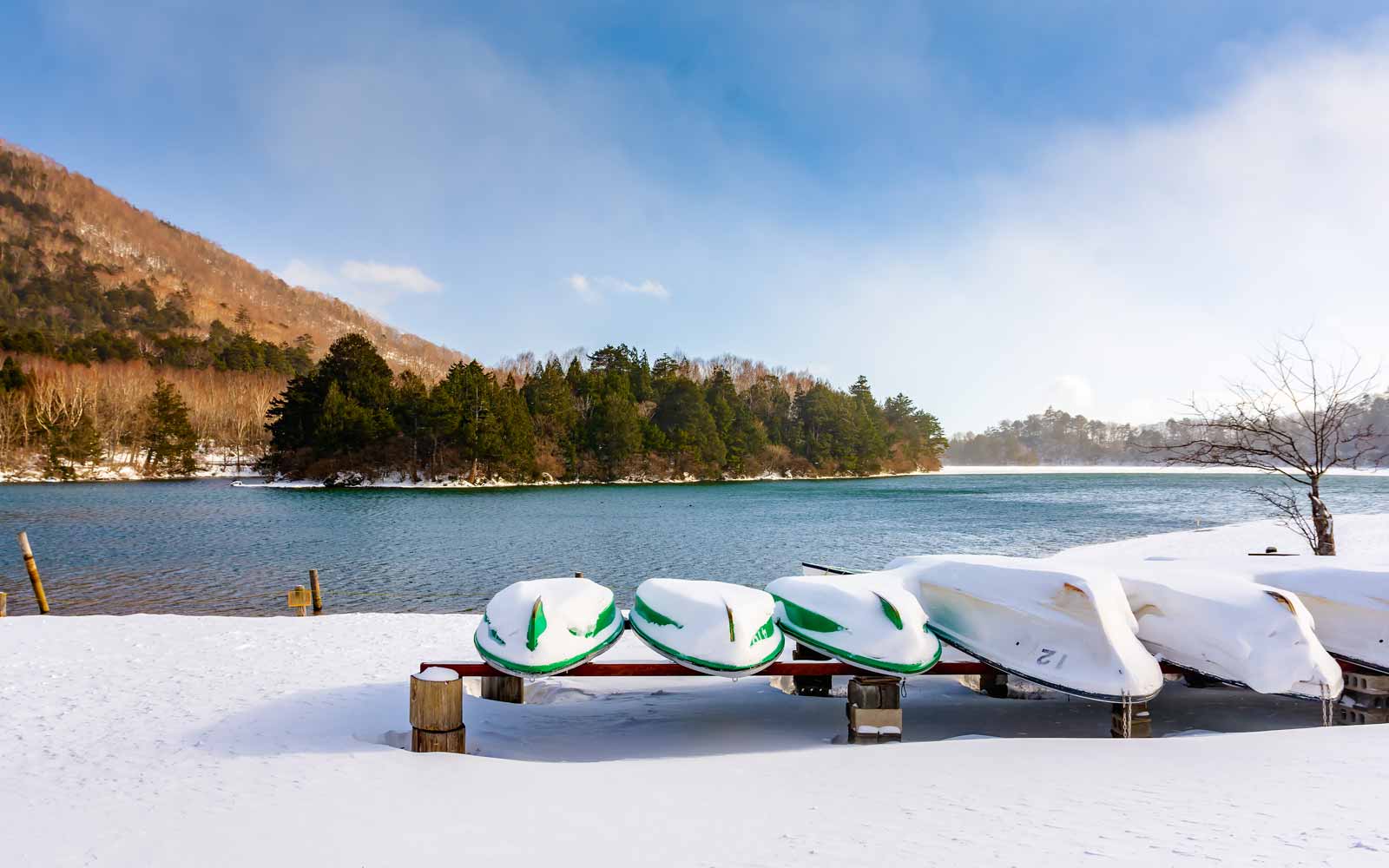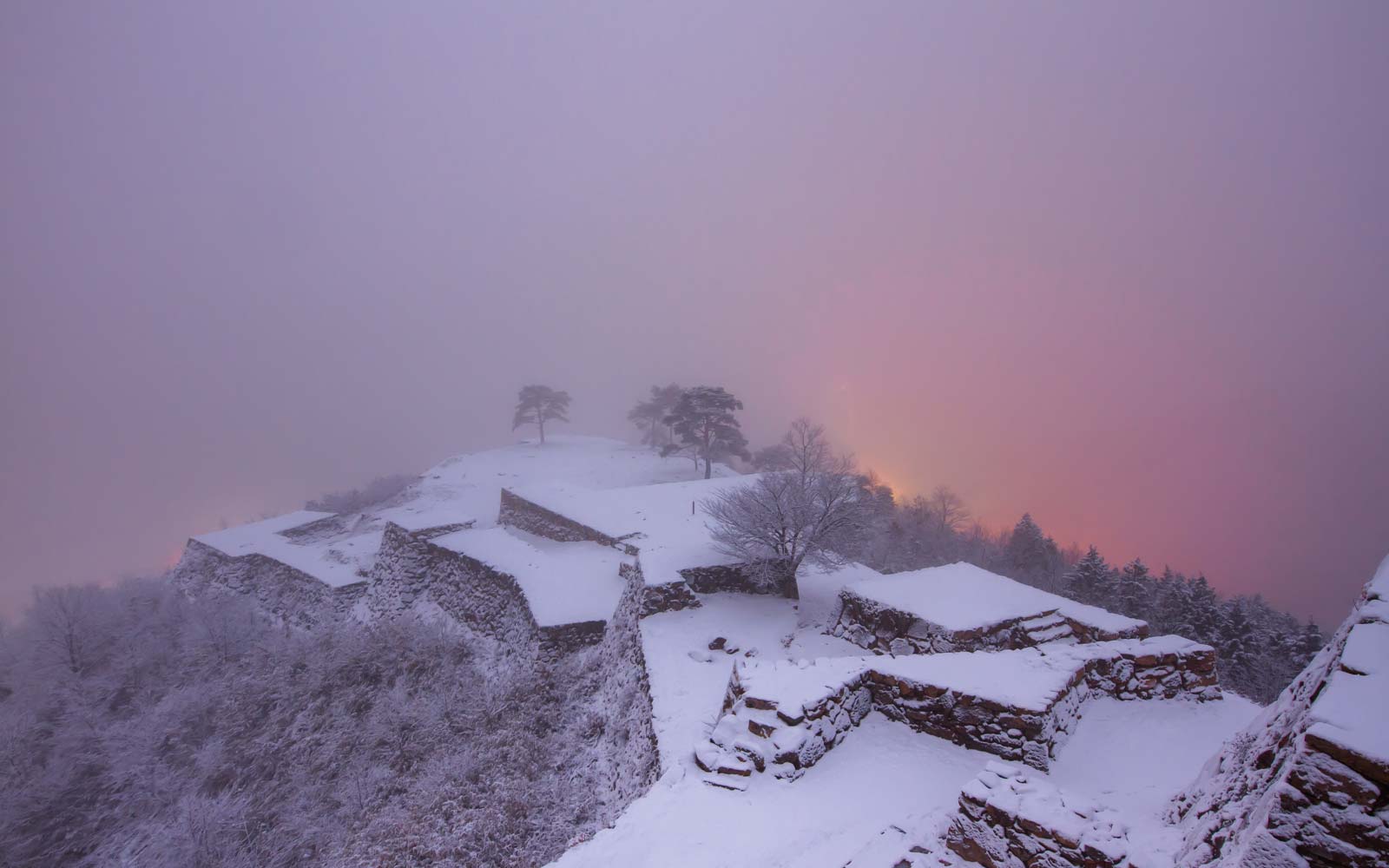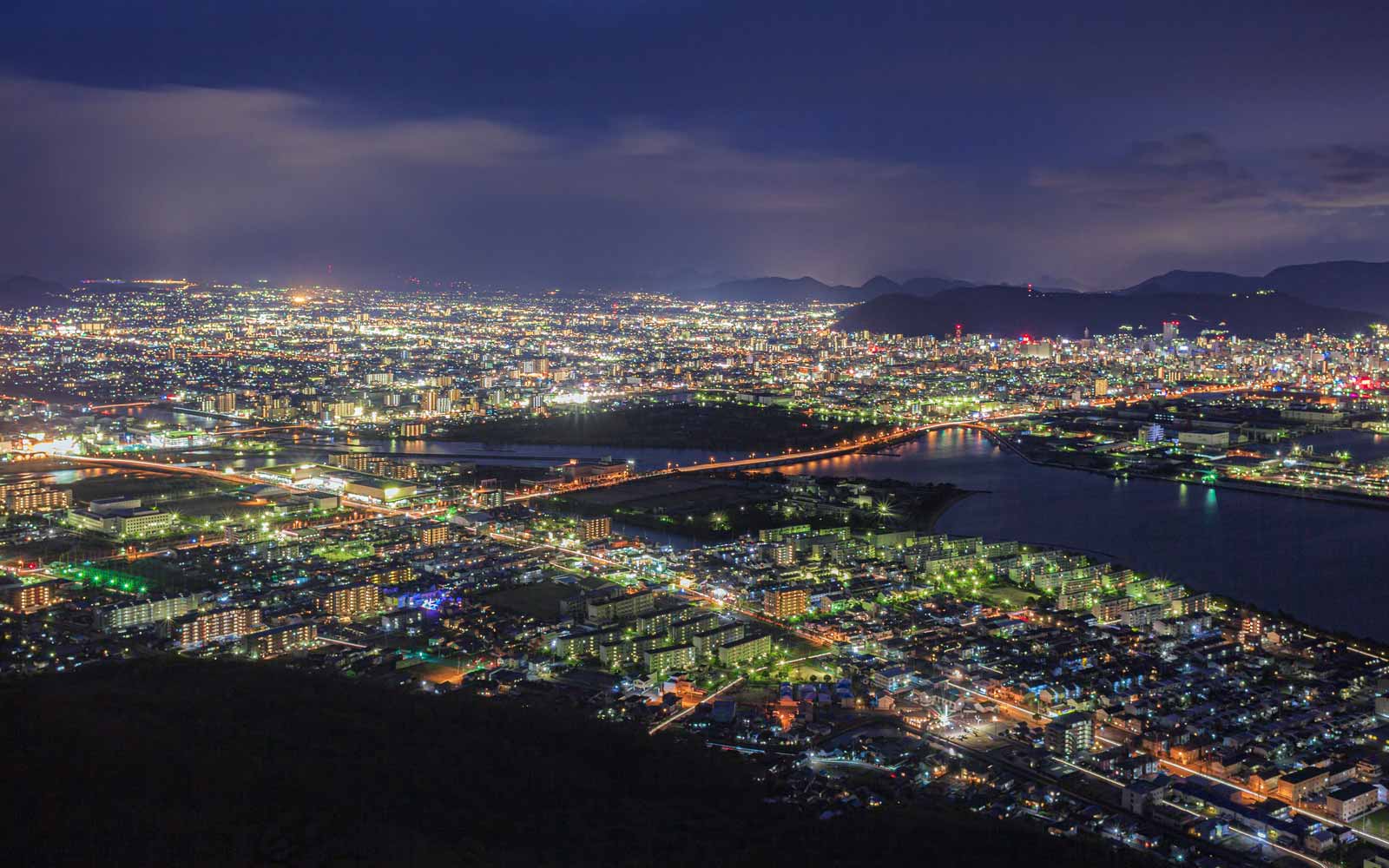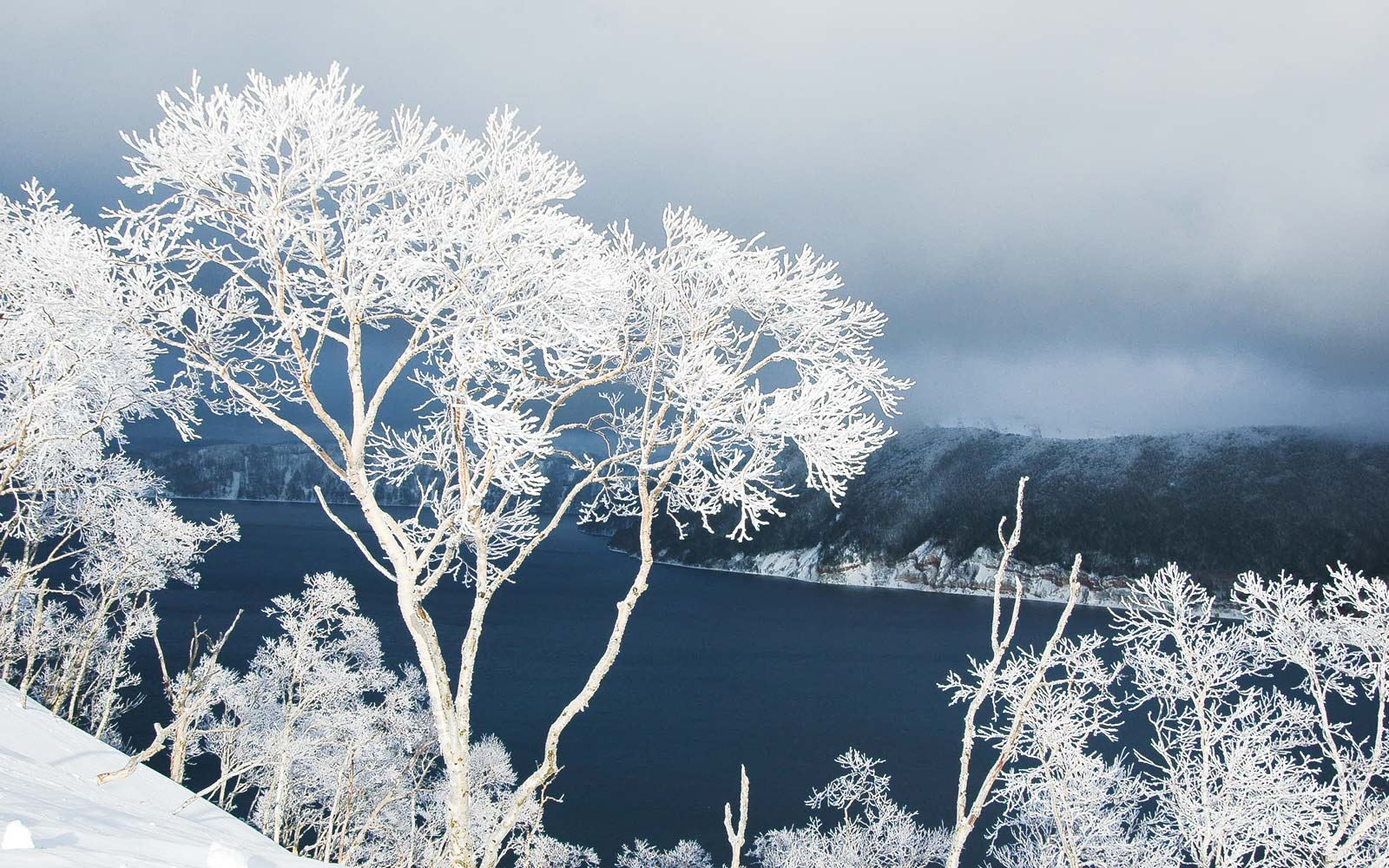We’re shifting from T-shirts to sweaters and pulling out the kotatsu (a table with a heater underneath)—which, in Japan, means dazzling illuminations and cute winter dates. Unfortunately, despite the cold, it still gets pretty crowded.
To enjoy the wintertime views around Japan safely and comfortably, here’s a short selection of spots not on everyone’s list. So grab your gloves and scarf, and let’s get going!
Kanto

Lake Yuno (Nikko)
Although Tokyo has fantastic illuminations in winter, you’ll have to head out of the city if you don’t want swarms of people in your photos.
A fun option for an overnight trip is the wintery sights of Nikko in Tochigi Prefecture. The winter months make for a magical walk around Yuno Lake, where you can see the snow-covered peaks glistening across tranquil waters. In the evening, you can see illuminations around Lake Chuzenji, where the lights bounce off the water and create a romantic ambiance.
Alternatively, for foodies and fruit lovers, you could head to one of the many strawberry farms to pick your own delicious winter treats. Strawberries are a popular winter fruit in Japan (grown in greenhouses), and Tochigi is well known for its juicy strawberries.
Chubu

Hakuba (Nagano)
Nagano and Niigata are ideal spots to hit the winter slopes. For a simple and relatively affordable ski trip, Unazuki Snow Park in Toyama is off the radar for most. There are also nearby onsen (hot springs) and viewing spots that make for fun visits after skiing, like the Omokage Observatory (observation deck), with views of the snowy mountains and onsen area.
For a similar experience in Gifu, the Hida Funayama Snow Resort is a quaint ski resort great for casual trips with the family or beginners. Experienced skiers will feel more at home on the challenging runs in Hakuba (Nagano Prefecture), but those resorts are often much more crowded.
Kansai

Hyogo’s Takeda Castle Ruins.
If you’re in Osaka during winter, watch the city light up at night from Satsukiyama Park. Spend the day at the zoo or exploring the large park, and once the sun sets, there are a few different observation decks where you can get crisp evening views of the twinkling lights.
For those with a taste for adventure, head further to the Takeda Castle Ruins in Hyogo. Surrounded by clouds and snowy landscapes, the ruins feel straight out of a movie. Although they’re not easy to get to, it’s worth it for such an unforgettable winter memory.
Kyushu

Kurokawa Onsen (Kumamoto)
Despite being in the warmer south, there are plenty of winter activities and snowy landscapes in Kyushu.
One of the most photogenic and cozy areas that not everyone knows about is Kurokawa Onsen in Kumamoto. There, you can walk along the scenic river, then bathe away any remnants of the cold weather in one of the many hot springs. Or take a romantic stroll in the evening to see the floating lanterns along the Tanoharu River at the Yu Akari illumination event (Japanese)
If you’re itching for a winter hike and some snowy scenes, visit neighboring Oita Prefecture to trek up the Kuju Mountains. A round trip around the main peaks takes four to six hours, so it is not for the faint-hearted. For something less physically demanding, you could explore the walkways around the Chojabaru Visitor Center, which only takes around 40 minutes.
Chugoku

What is this? An igloo for ants!
Chugoku is great for onsen trips such as Yubara Onsen in Okayama. Here, you can wash the tension away in the evening and explore gorgeous trails and natural scenery such as Yubara Lake and Furuya Fudou Falls in the day.
For winter illumination, make a trip to Hiruzen in Tottori. There you’ll find some superb winter views of Hiruzen and hiking trails, but it’s also where the Hiruzen Yuki Koi Festival is held. Tiny igloos house little lanterns, creating a scene that looks like something from a fairy tale.
Shikoku

The view from Shishi no Reigan.
Shikoku isn’t known for snowy scenes, but winter is one of the best times to get clear views from observation decks and lookout points, such as Shishi no Reigan in Kagawa. This spot offers stunning panoramas over the area and is close to temples and aquariums for visits during the day.
Further west, in Kagawa’s Manno region, is Sanuki Manno Park. Although the park is well known among locals, the total area spreads over 3 1/2 square kilometers, so you’ll never feel claustrophobic or crowded walking through their dreamy winter illuminations.
Tohoku

Lake Inawashiro (Fukushima)
Being the northernmost of Japan’s main island, Tohoku is perfect for snowy and icy sceneries. Mount Bandai and its surroundings in Fukushima offer scenic trails and lake views with flocks of swans and ducks that migrate to Japan in winter.
Onsen lovers can head further north to Akita, where you can find lesser-known hot springs such as Tamagawa Hot Spring, Natsuse Onsen Miyakowasure and Alpa Komakusa. These each have rotenburo (outdoor baths) to take in the winter atmosphere from the comfort of a steamy dip.
Hokkaido

“Rime ice” (Hokkaido)
Hokkaido is the place for snowy scenery and that signature winter wonderland vibe. Lake Mashu and Lake Kussharo in Kawakami offer stunning icy spectacles for snow trail lovers and are also famous for the natural ice phenomenon known as “rime ice.” But for mystical illuminations, you might visit the Shikotsu Ice Festival in Chitose, closer to Sapporo, for a city trip.
If skiing is more your thing, after skiing in Niseko, there are plenty of smaller onsen that aren’t as crowded, such as the quaint Goshiki Onsen and Hotel. You can relax your muscles in their indoor or outdoor baths for apres-ski bliss.
No matter where you are in Japan, it’s not hard to find activities that perfectly fit the seasons. Winter is no different! This should make a good base for your winter travels, but if you’re looking to make the most of the snow, have a look at our ski guide and hit those slopes!














